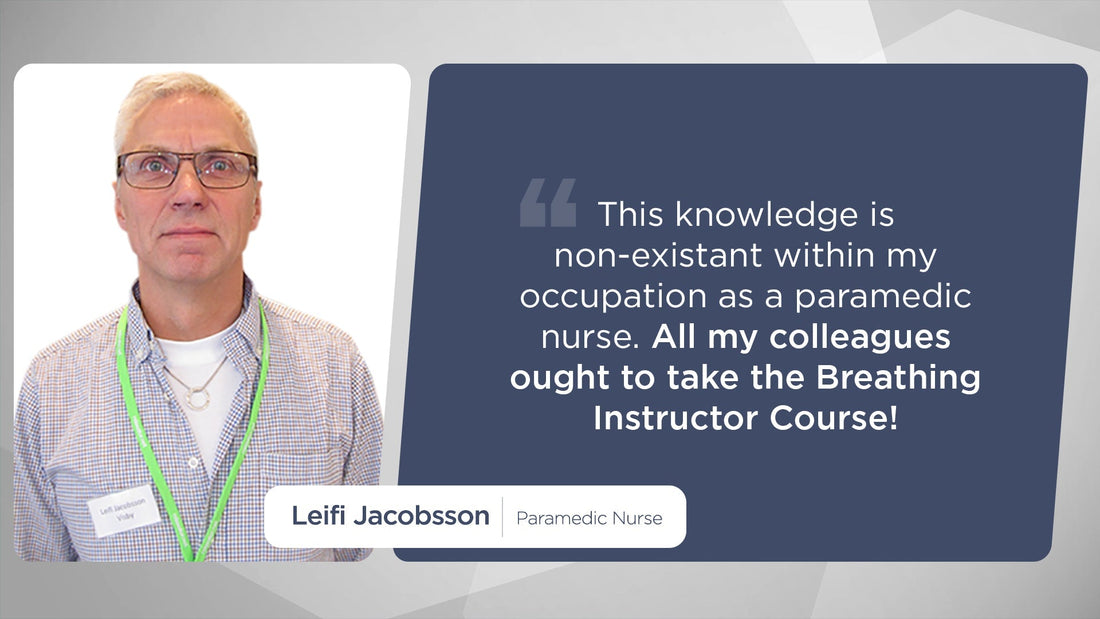
Paramedic nurse: Everyone should have a Relaxator!
I am employed as a paramedic in the ambulance department at Gotland Hospital, in Sweden. Shortly after having completed the 28-Day Conscious Breathing Retraining Program we had a health check at work. I had used the Relaxator for a month, slept with my mouth taped shut, and had exercised with my mouth closed, etc. When I had the check up, I was able to blow 7 liters of air in the Peak Flow (PF) meter and my resting pulse rate had gone down from 48 to 42 beats per minute.
All my results were so good that the doctor doing the check-up was amazed. The Relaxator has hepled me very much, evyone should have one.
And, I don’t snore when I sleep with my mouth taped up, plus it worked without the tape once I got used to breathing through my nose. One tip for anyone who snores is to take the Conscious Breathing Foundation Course and learn the skill, because for many it will help get rid of a lot of illnesses and relieve other symptoms, too.
All my colleagues should take the Conscious Breathing Course
I was so happy when I found out about the Conscious Breathing Instructor Course. Thank you for a really great course, I learned so much! A lot of what I have learned can also be used in the healthcare arena. We often have patients in the ambulance with breathing problems, which makes them very high priority. All my colleagues should do this course.
The Pre Hospital Life Support (PHTLS/EMS) training is a common course for the ambulance sector the world over, and much of it is precisely about breathing:
- A. Airway = Check to see that the patient’s airway is unobstructed.
- B. Breathing = How is the patient breathing, and is he/she breathing enough?
- C. Circulation = As it sounds, good circulation to all the body’s organs.
- D. Disability = Level of the patient’s consciousness, sensibility, ability to move.
- E. Exposure = Protect the patient against the environment.
It’s uncanny that the whole PHTLS (EMS) concept is so similar to the Conscious Breathing Retraining Program – how good you feel when you practice correct nasal breathing techniques. Using your diaphragm to breathe also helps you build your abdominals, and I have noticed that my posture has improved, so I walk more upright with my shoulders squared back.
Thank you, Anders. I am reading your book, Conscious Breathing, and it is so good.







